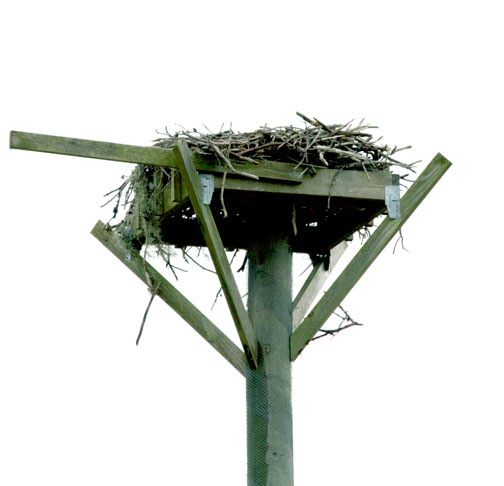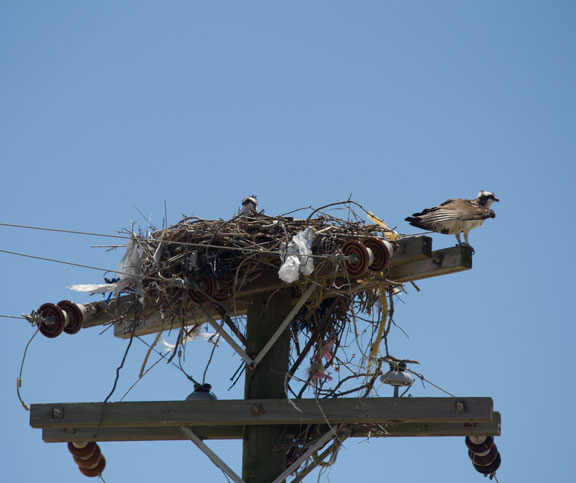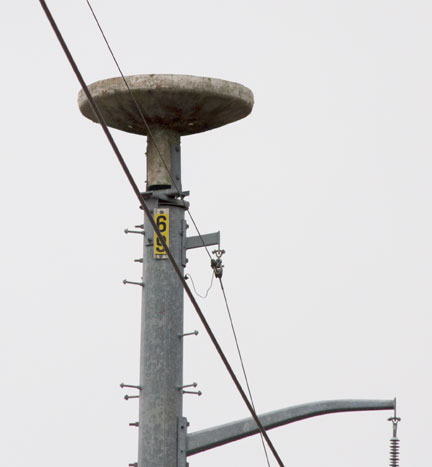
Ospreys are a common sight along our coastline, soaring high, patrolling waterways, and fabricating enormous stick nests. These large hawks do well around humans, and typically nest in high locations. Power transmission lines provide the perfect spot; however are a dangerous hazard for the birds and the lines.
Since the early 1990s, Gulf Power has been providing a fitting solution, creating suitable habitats by constructing platforms to relocate breeding pair ospreys. In the Gulf Power service area – from the Alabama border on the west to the Apalachicola River on the east – more than 200 platform boxes/discs have been installed.
The ospreys seem to like the platforms and re-position quickly.
“They typically relocate within a couple of days,” said Jeff Cole, environmental specialist with Gulf Power.
The nests are relocated before the breeding season begins and are a variety of sizes and shapes; from disks mounted on top of the transmission poles, to larger wooden platforms up to 5 ft. x 5 ft. mounted on top of wooden poles. The pole heights typically match the height of the transmission line poles and placed nearby the old nest. The platforms have chain link fencing across the inside of the framing to keep the nests aerated and free from debris.

“The ospreys seem to prefer the platforms over the disks,” said Cole.
In the past year, the nesting boxes have been added to Gulf Power’s regular inventory of about a dozen supply warehouses across their service area to make it easier for crews to have access to them.

Learn more about Gulf Power’s wildlife projects by clicking here.
Interesting osprey facts:
• Ospreys (Pandion haliaetus) are known for its diet of live fish and ability to dive into water to catch them. Hunting Ospreys are a picture of concentration, diving with feet outstretched and yellow eyes sighting straight along their talons.
• An Osprey may log more than 160,000 migration miles during its 15-to-20-year lifetime. Many summer in Canada and migrate south for the winter. However, northwest Florida boasts ospreys living in our area year-round.
• Ospreys are excellent anglers. Over several studies, Ospreys caught fish on at least 1 in every 4 dives, with success rates sometimes as high as 70 percent. The average time they spent hunting before making a catch was about 12 minutes—something to think about next time you throw your line in the water.
• Osprey eggs do not hatch all at once. Rather, the first chick emerges up to five days before the last one. The older hatchling dominates its younger siblings, and can monopolize the food brought by the parents. If food is abundant, chicks share meals in relative harmony; in times of scarcity, younger ones may starve to death.
• The name “Osprey” made its first appearance around 1460, via the Medieval Latin phrase for “bird of prey” (avis prede). Some wordsmiths trace the name even further back, to the Latin for “bone-breaker”—ossifragus.
• The oldest known Osprey was at least 25 years, 2 months old, and lived in Virginia.
Osprey fact information courtesy All About Birds.
